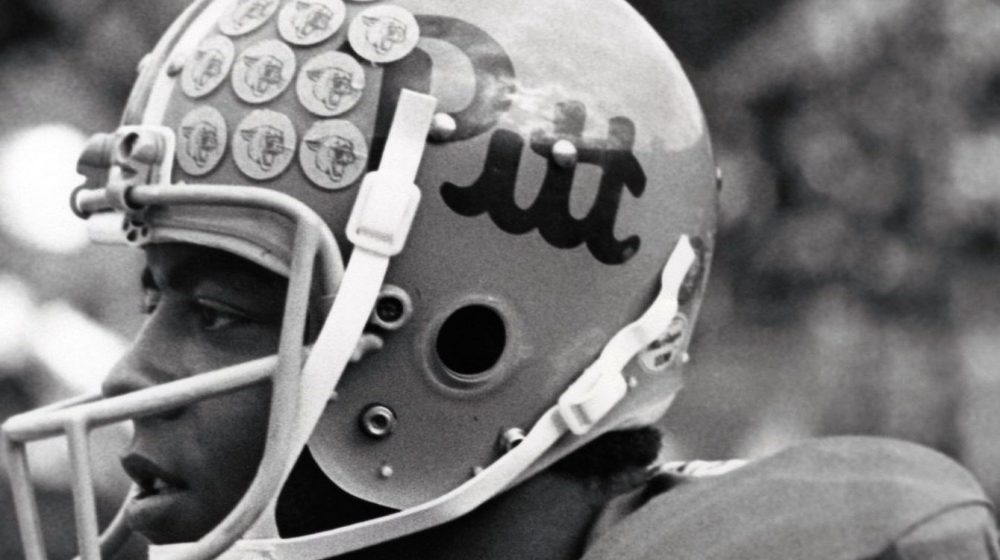The Pittsburgh Panthers understand something about studying for the College Football Hall of Fame. From unstoppable running backs to highlight-reel wide receivers, Pitt has had no lack of talent on the national stage. But when it comes to the Heisman Trophy—the pinnacle of individual college football honors—only one Panther has ever returned home with the award.
The rest? They came close enough to make history, define Heisman talk, and solidify themselves as the game’s legends. So, who exactly are these Panther legends who got Heisman voters paying attention? Let’s turn back the clock to the glory days of Pitt football and relive the legendary names that got the Steel City cheering.

Tony Dorsett (1976)—Running Back (Winner)
Let’s begin with the crown jewel of Pitt’s Heisman past: Tony Dorsett, the smooth-running back who placed the Panthers on the national scene during the 1970s. In 1976, Dorsett won the Heisman and overwhelmed college football.
He rushed for 1,948 yards and 21 touchdowns, powering the Panthers to a 12-0 record and the national title. By the time he finished college, Dorsett had established a record for most rushing yards in an NCAA career with 6,082 yards. It’s now safe to say that it was a feat that amazed both fans and voters.
Tony Dorsett #Heisman https://t.co/fTks2yzRhv pic.twitter.com/qxPUcVtVhd
— Old Time Football 🏈 (@Ol_TimeFootball) May 27, 2025
He swept the Heisman Trophy by a landslide with 701 first-place votes and is the only Pitt player ever to claim the award. With Dorsett setting records with scorching speed, vision, and elusiveness, Dorsett made it all look effortless.
“Tony was one of those players you knew was special the moment he touched the ball,” former Pitt coach Johnny Majors said. “He was pure magic.”
Dorsett had a Hall of Fame career with the Dallas Cowboys after college and remains one of the most electrifying backs in NFL history.
Larry Fitzgerald (2003)—Wide Receiver (Runner-Up)
If there had ever been a red player by the Heisman tradition, it would have been Larry Fitzgerald. During his sophomore season in 2003, Fitzgerald had arguably the best season in college wide receiver history: 92 receptions, 1,672 yards, and 22 touchdowns. He caught a touchdown in 18 consecutive games, an NCAA record that still hasn’t been touched.
Despite those numbers, Fitzgerald finished second in Heisman voting, losing to Oklahoma quarterback Jason White—partly because voters have historically leaned toward quarterbacks and running backs. But no one could deny that Fitzgerald was the most unguarded receiver in the country.
“Larry had this quiet intensity,” said then-head coach Walt Harris. “You’d look up and he already had 150 yards and two touchdowns.”
Fitzgerald’s year restored Pitt’s national reputation and began his NFL career of Hall of Fame caliber. His 2003 season is a standard of greatness at the receiver position.
Dan Marino (1981)—Quarterback (Heisman Finalist)
Before he was dazzling NFL defenses with the Miami Dolphins, Dan Marino was doing the same thing for the Panthers. In 1981, Marino passed for 2,876 yards and 37 touchdowns, guiding Pitt to an 11-1 mark and a Sugar Bowl win over Georgia. He finished fourth in Heisman voting that year, falling short to USC’s Marcus Allen.
Although he lost the Heisman, Marino’s arm power, composure, and big-play ability made him popular in college football. His heroics in bowl games late in games and calm demeanor in crunch time led fans to feel that Pitt was a step away from another national championship.
“Dan had a cannon for an arm and the confidence to use it anywhere on the field,” former teammate Jimbo Covert said.
Marino’s legacy at Pitt continues, and his college days were a pivotal chapter in a career that ultimately found him in Canton.
Hugh Green (1980)—Defensive End (Heisman Runner-Up)
It does not happen often for a defensive player to cause some real noise in the Heisman vote, but Hugh Green was no ordinary defender. During the 1980 season, Green amassed 17 sacks and 123 tackles and caused havoc in the backfield every snap.
He finished runner-up in the Heisman vote, losing narrowly to South Carolina running back George Rogers. At the time, Green’s second-place finish as a full-time defensive player was the best.
He also received the Maxwell Award, Walter Camp Award, Lombardi Award, and UPI Player of the Year—a sweep of defensive awards. His rush ability off the edge made quarterbacks tremble, and coaches game-planned against him.
KEEP READING: Florida State Seminoles Heisman Trophy Winners: A Complete List and History
“He played with a ferocity and discipline that was unmatched,” said former linebacker and teammate Sal Sunseri.
While Green lost the Heisman, his effect on the sport, physically and symbolically, was monumental. He demonstrated defenders could be difference-makers as well.
Legacy of the Panthers: So Close, Yet So Impactful
Though the Panthers have only one official Heisman winner, Tony Dorsett, the program has had a string of top-level players, especially the ones who forced voters’ attention. Dorsett’s trailblazing effort in 1976 is the highest, but Fitzgerald, Marino, and Green all etched their piece of Heisman lore.
Collectively, these four legends established an era when Pitt football was a national power. Beyond the statistics and accolades, their impact carried over into the NFL, where they continued to excel and establish themselves as legends.
Pitt’s Heisman legacy isn’t so much about hardware as it is about greatness. By winning or by almost winning, these Panthers showed they were in every Heisman discussion. And if history holds, the next Pitt star could be lurking just around the corner, ready to pursue the trophy again.
College Sports Network has you covered with the latest news, analysis, insights, and trending stories in college football, men’s college basketball, women’s college basketball, and college baseball!

